Notes
The Visual Politics of Colin Kaepernick
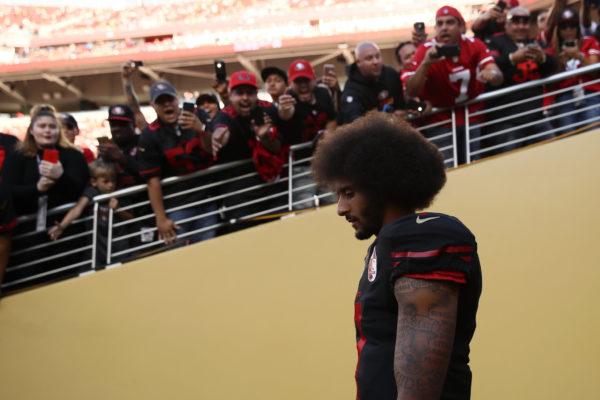
After Donald Trump’s ugly outburst in Alabama about athletes who “take the knee,” it seemed time to do a post on the man our president was primarily alluding to. With countless sideline photos to choose from, not to mention magazine spreads, publicity shots and Instagrams, I thought I’d concentrate on a group of pictures published in a NY Times story in the Sports section earlier this month titled: “The Awakening of Colin Kaepernick.” The whole photo edit is ripe for words.
This lead photo is particularly interesting, especially in terms of the NYT caption:
Colin Kaepernick may forever be known as the quarterback who knelt for the national anthem before N.F.L. games in 2016 as a protest against social injustice.
Here’s what I wrote about the photo before I knew any better:
The lead photo is particularly raw. Perhaps a summation of his 2016 season, We see Kaepernick, alone, in his home stadium, walking toward the field from the team tunnel. Between Kaepernick’s subdued look, his inward focus, and those rabid, cellphone-wielding fans screaming at him, the emotional contrast couldn’t be starker. Incorporating Kaepernick’s travails during his brutal 2016 season, however, it looks like he’s being pilloried. And martyred.
The photo seems to capture a mood, but when we talk about photos, context is all. A little research reveals that the photo was taken Oct. 6, 2016, at the 49’ers Levi Stadium as the team entered the field to take on the Arizona Cardinals in the fifth week of the season. (By the way, other photos show Kaepernick entering surrounded by teammates.) Having lost four straight games led by a different quarterback, the 49’er fans, according to the SF Chronicle, weren’t shouting their disapproval. Instead, and in spite of Kaepernick taking a knee before each game so far, the fans were clamoring for Kaepernick to take over, which he did the next week for the rest of the season.
I hope you’ll excuse the bias in my initial take. Maybe the scene of so many Trump rallies between then and now colored my read?
Addressing the visual rhetoric of Colin Kaepernick, there is another attribute we can’t overlook. The afro is clearly a throwback to the black power movement. How provocative is it? Well, former NFL quarterback Michael Vick thought it played a role this summer in teams refusing to hire Kaepernick for the 2017 season. Quoting a TV interview via the Sporting News:
Listen, I’m not up here to try to be politically correct. Even if he puts cornrows in there. I don’t think he should represent himself in that way (wearing the Afro). Just the hairstyle. Just go clean-cut. You know, why not? You’re already dealing with a lot.
In the article, Vick argues for Kaepernick to make himself “more presentable.” But doesn’t that undermine the whole point — especially if the fans actually perceived the quarterback as a potential savior in the photo above? It also makes you wonder how much Americans care about winning. One can only imagine how things would have turned out if Kaepernick had done as able a job on a championship team, as opposed to a terrible one.
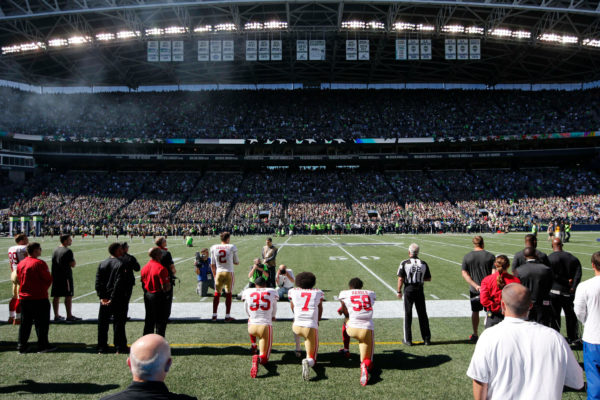
There are so many photos of Kaepernick “taking a knee,” it’s interesting the Time selected this one. The players’ distance from the camera (Kaepernick, #7), the breadth of the view, and the fact that everyone else on the sideline is so casual, gives the photo an early, documentary feel. (You can compare that to the density and intensity of the photos taken yesterday on the sidelines of the Jaguar-Ravens game in London as the players rebelled against Trump.) With Kaepernick unsigned this season, and effectively blackballed from the league, the historical quality of the photo stands for the ultimate consequence: Kaepernick sacrificing his career.
There are important things the photo doesn’t do, however. The first is to establish it in time. Counting the preseason, the game in Seattle is already the 7th of the season. What it also doesn’t do, and no photo does, is convey the magnitude of Kaepernick’s protest over an entire season, a total of twenty overall. As much as Kaepernick’s “taking a knee” is compared to John Carlos and Tommie Smith giving the black power salute on the victory stand at the ’68 Olympics, that happened once. The photographs of Kaepernick repeating the ritual in different cities, not to mention the incredible pressure and abuse that surrounded it over those weeks and months is not evident in any one photograph, and certainly not this one.
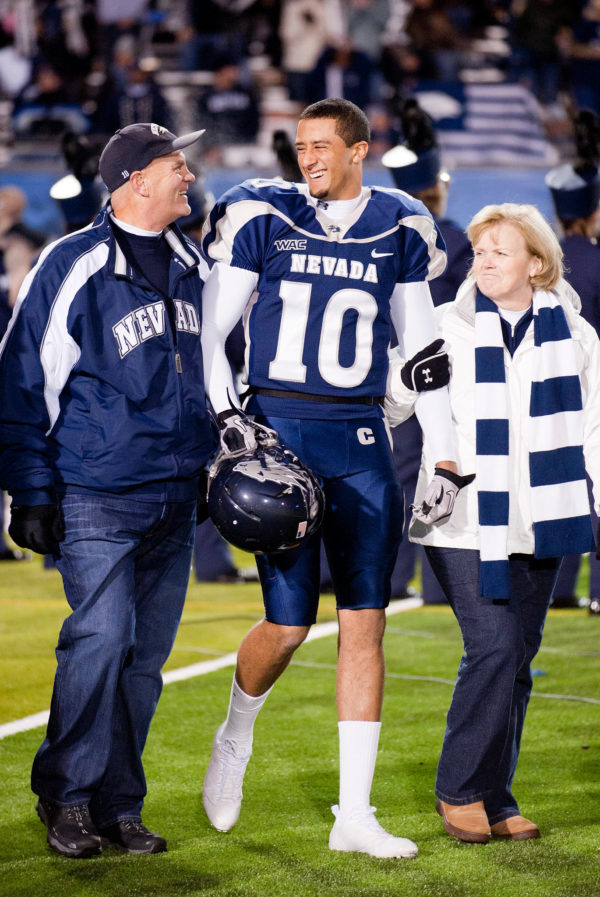
The Times article describes how Kaepernick was adopted as an infant. It also details the awkwardness he felt as a tall black child traveling with his family in the summertime, and how his race was a defining optic from early on.
This photo was taken after a game at the University of Nevada where Kaepernick smashed performance records. What can you say about a photo like this, taken with his parents during those glory days, besides: innocence lost?
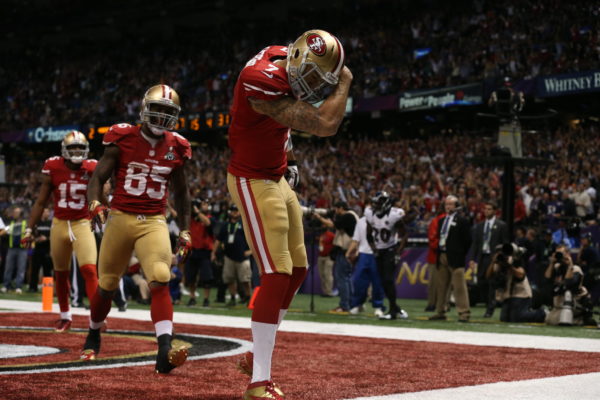
This photo captures one of Kaepernick’s greatest sports moments, scoring a touchdown in the 2013 Super Bowl, the NFL’s penultimate game. It works on a number of other layers, too. Kaepernick was noted early on for his extensive tattoos, though not everyone knows they are designed around bible verses. The photo captures his tendency to kiss his right bicep, labeled with the word “respect.”
The ultimate irony of the photo, however, is how much (non-political) demonstrations are venerated by the league.
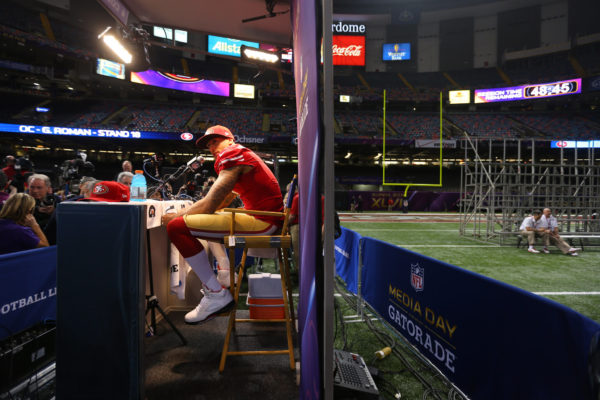
This was taken during the Super Bowl media day, and is a clever part of the story edit. Players are expected to rep the brand. The photo captures the tension between the players as extensions of the NFL, and as their own men.
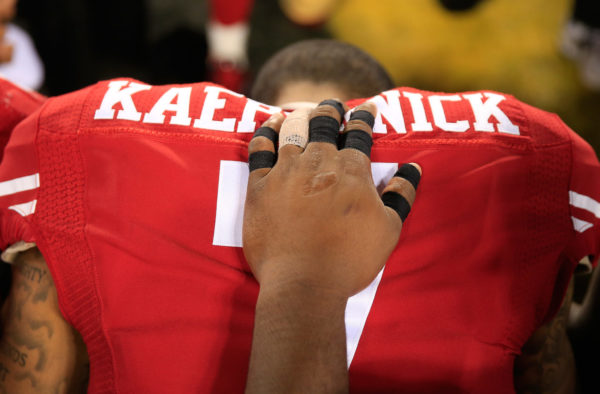
It is a more than fitting last photo. As Trump shouts for “owners” to punish men economically indentured to them (and, how familiar is that refrain?), the image has a decidedly higher bent to it. Kaepernick, and the other players who have “taken a knee” during the national anthem, are quick to dispel the charge they are disrespecting the country, their faith, or the military.
If you didn’t know, Kaepernick’s protest over the 2016 season started by remaining on the bench. It was Nate Boyer, a former Green Beret who played briefly in the NFL who suggested the “taking a knee” gesture, based on the military ritual honoring fallen colleagues. Kaepernick adapted the ritual to honor, and, of course, draw a provocative parallel to African-American citizens dying at the hands of police in shootings around the country.
Evoking civil rights protest as a higher calling, the photo captures the sanctity of intent as Kaepernick prays with members of the opposing team. In the name of context though, I should emphasize the photo The Times closed with was actually taken back in 2014. That’s when the bonding was easier to come by, and way before this past weekend, when most of the NFL stood up, at least in a one-time gesture, for an otherwise sidelined Colin Kaepernick.
— Michael Shaw
Photo: Ezra Shaw/Getty Images Caption: Colin Kaepernick may forever be known as the quarterback who knelt for the national anthem before N.F.L. games in 2016 as a protest against social injustice. Photo 2: Joe Nicholson / USAToday Sports via Reuters Caption: From left, safety Eric Reid, Kaepernick and linebacker Eli Harold knelt during the national anthem before an N.F.L. game against the Seahawks last September. Photo 3: Patrick Cummings / Associated Press Caption: Kaepernick walked onto the field with his parents, Rick and Teresa, on senior night in 2010 at the University of Nevada, Reno. Photo 4: Doug Mills / The New York Times. Caption: Kaepernick, as the San Francisco 49ers’ quarterback, scored a fourth-quarter touchdown in a 34-31 loss to the Baltimore Ravens in the Super Bowl in New Orleans in February 2013. Photo 5: Chang Lee/ The New York Times Caption: Kaepernick during media day ahead of his Super Bowl appearance. He eventually became very reluctant to say much in interviews. Photo 6: Rob Carr / Getty Images Caption: Kaepernick prayed with members of the Ravens after a preseason game in Baltimore in 2014.
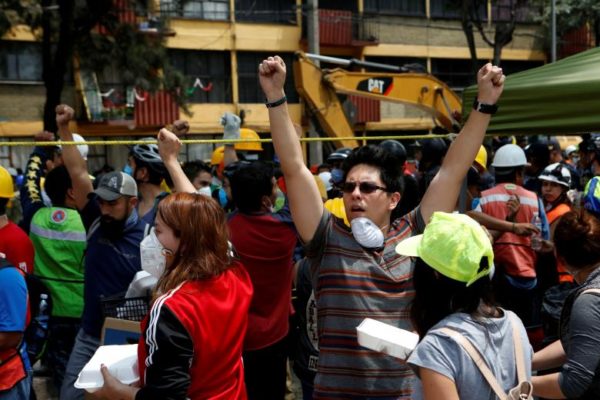
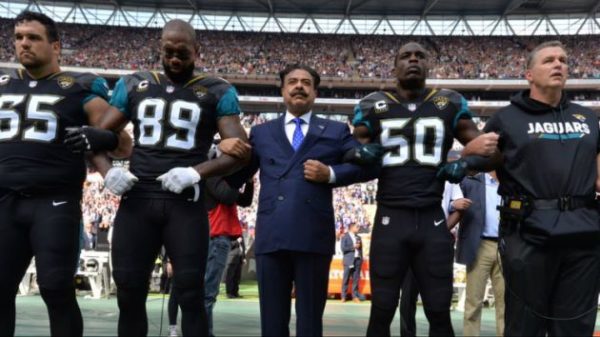
Reactions
Comments Powered by Disqus